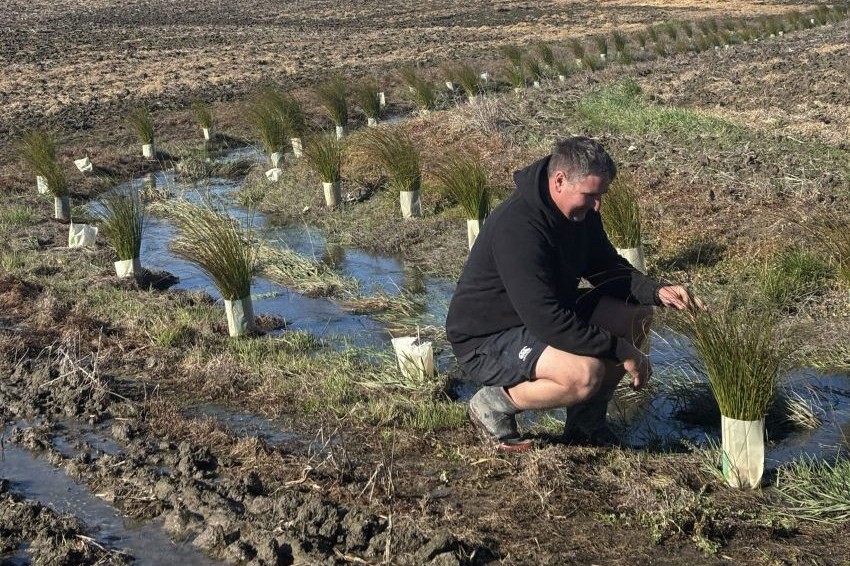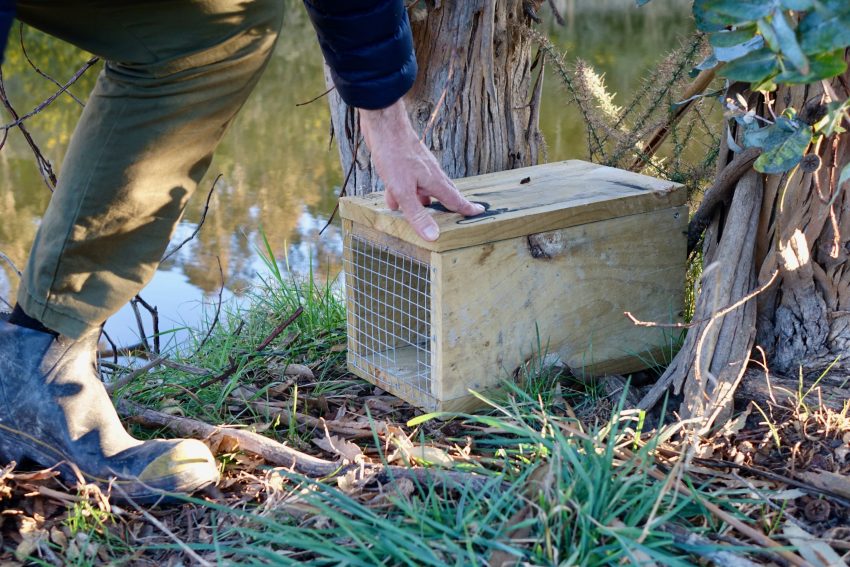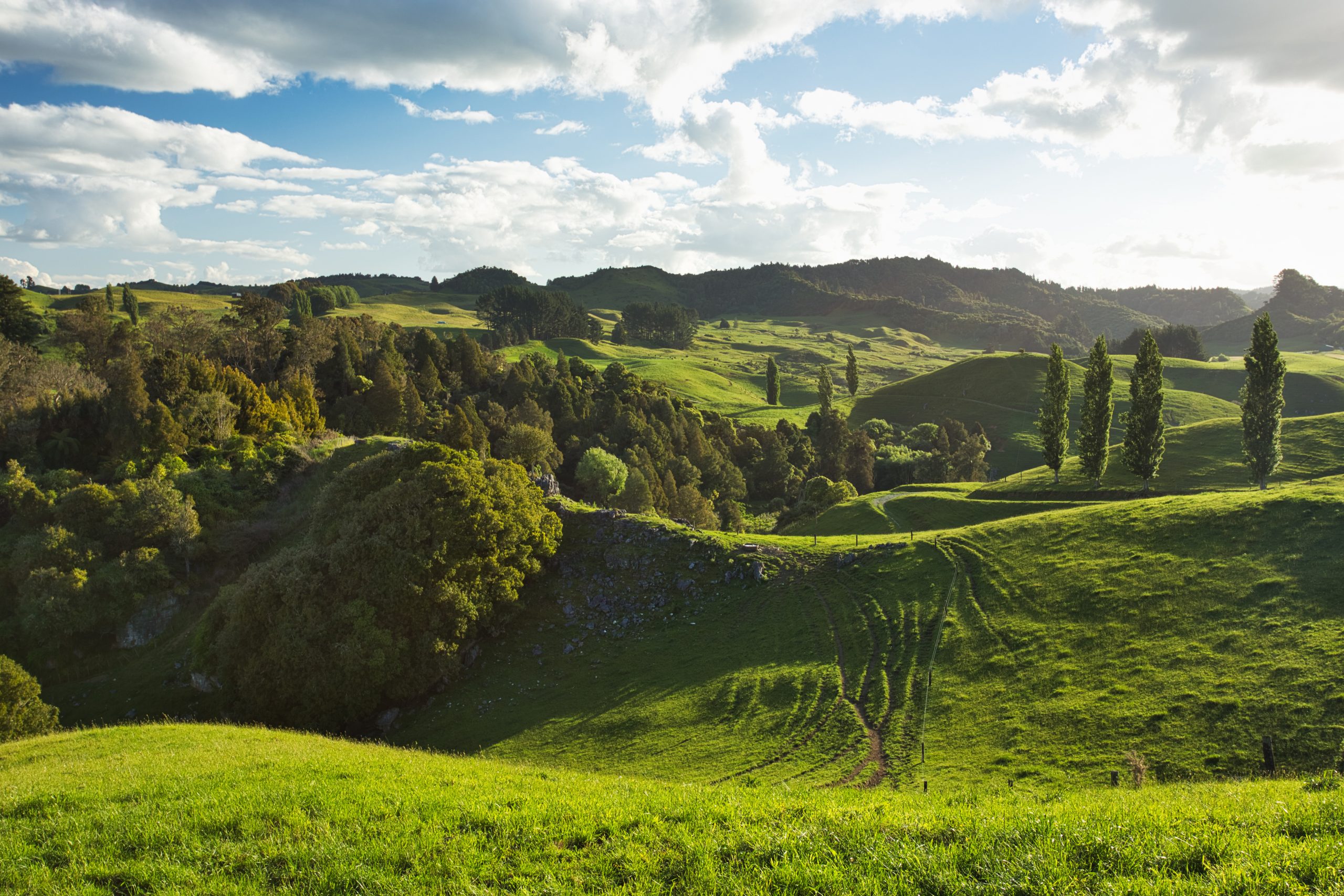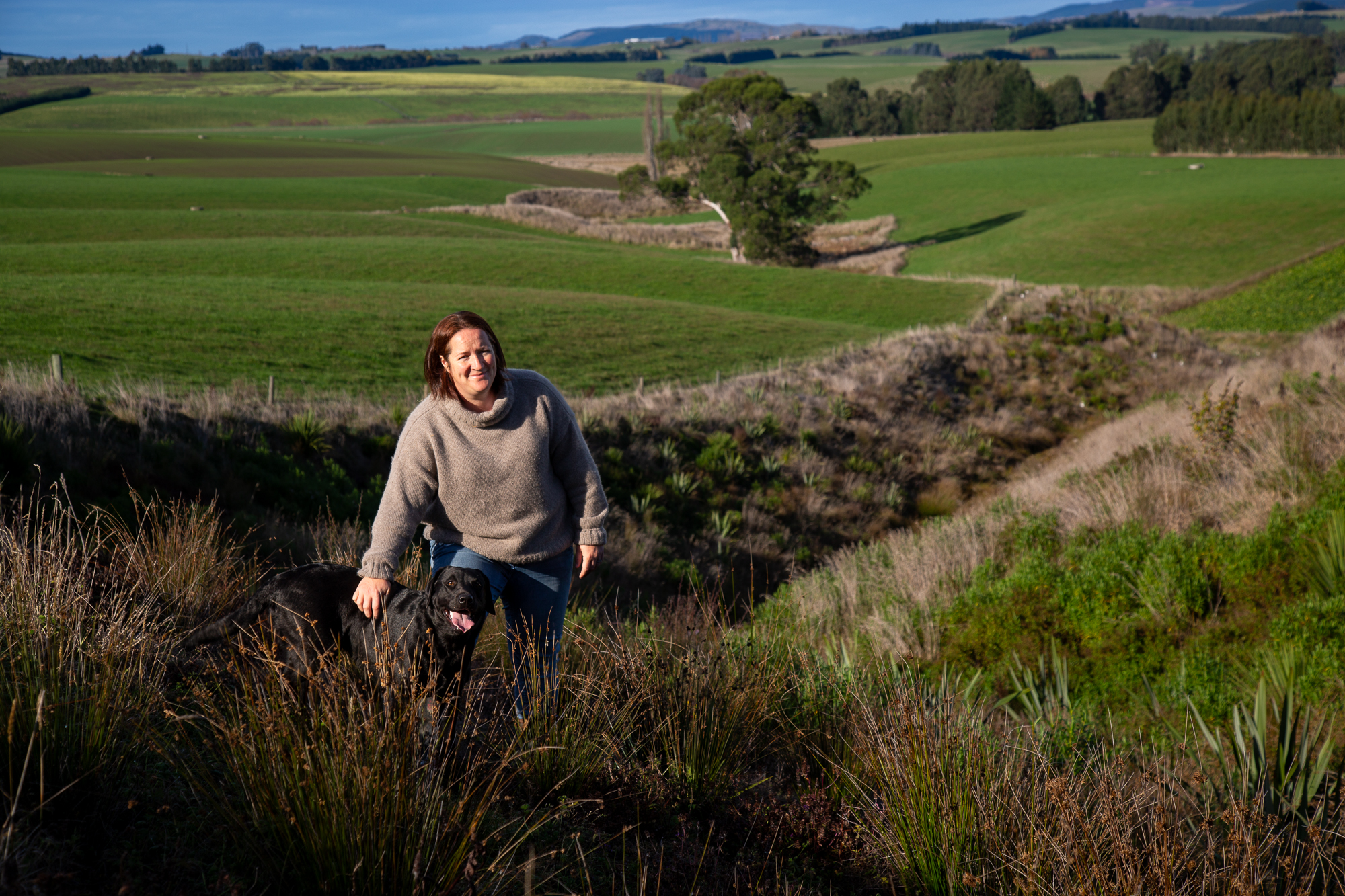BY: Sandra Taylor
When gold diggers dug a sludge channel near the Central Otago town of Omakau back in the 19th century they didn’t give much thought to the possible long-term environmental impact of their actions.
Over the years, the growth of irrigation and the intensification of farming around this channel and its tributaries has meant the sludge channel is now a source of contamination. Sediment, nutrients and e.coli run into Thomson’s Creek, a much-valued and otherwise clean waterway that runs from the surrounding hills down into the Manuherikia river.
To address the issue, a group of local farmers have banded together to form the Thomson’s Creek catchment group and are working alongside experts to look at ways they can mitigate contamination from the sludge channel both on and off-farm.
Dunedin-based environmental consultant Nicola McGrouther is facilitating the group, which has also enlisted the services of freshwater ecologists Matt Hickey and Dean Olsen. They will help monitor, measure and design ways to reduce sediment and nutrient contamination into Thomson’s Creek.
The creek itself is typical of many Central Otago waterways in that it has a gravel bottom. In contrast, the sludge channel has a muddy bottom, however much of this is thick deposits of sediment on top of gravel. Dean found sediment ranged in depth from 5cm to 72cm.
Tests have shown Thomson’s Creek itself is relatively healthy. Water quality is good at the top of the catchment, but poor at the bottom (Otago Regional Council tests at the SH85 bridge) – after the water from the channel has fed into it.
Hickey and Olsen told farmers at a recent field day that water quality is a snapshot of nutrients in the water at a moment in time, whereas stream health is a more holistic assessment (of any waterway) over a long period of time.
Stream health looks at factors such as the presence of invertebrates – the goodies and the baddies, fish, vegetation (in and out of stream) and bank integrity.
Invertebrates live for between three months and one year and reflect water quality and habitat conditions over a period of time.
Tests taken in August showed invertebrate communities were similar both upstream and downstream of the channel outlet. The difference downstream was the higher number of bad invertebrates (those that can survive in poorer water quality).
Mayflies (the goodies) were found to be the dominant invertebrate both upstream and downstream of the channel outlet. These are a good food source for fish.
Historically, E. coli levels in Thomson’s Creek are highest between November and February. This is not typical as sunshine usually kills E. coli. This anomaly reflects the flood irrigation in the area as excess water from flood-irrigated areas flow back to waterways. This will likely improve as farmers move to more efficient, spray irrigation systems.
Thomson’s Creek is home to a rare galaxiid – the Central Otago roundhead. These are an ancient, scaleless fish and Otago is home to 13 of NZ’s most endangered non-migratory galaxiids.
Electro-fishing over a small area on the field day, yielded a decent-sized 40-plus year-old eel, a couple of bullies – and as with any fishing story there is always one that got away, in this case a trout.
Sediment is a significant driver of ecological health – certainly the most influential in the Thomson’s creek catchment.
Hickey says there is no upside to sediment (unlike nutrients where there is an initial flourish in ecological health before degradation begins) and it doesn’t take much sediment to impact negatively on stream health.
Sediment reduction is a focus for farmers who are working towards fencing off the channel and the tributaries feeding into it.
Tests have shown Thomson’s Creek itself is relatively healthy. Water quality is very good at the top of the catchment, but poor at the bottom.
ACTIVE WETLAND
The development of an active wetland at the sludge channel outlet would allow sediment to settle out and improve the quality of the water entering Thomson’s Creek. This will complement the work farmers are doing on farms to reduce sediment and nutrient runoff.
The channel would be modified to divert water into the wetland – the beginnings of which are already there. Water will flow over grasses which will slow the flow of water and capture sediment and nutrients.
This proposal is being scoped with the help of Ministry for the Environment funding under the Manuherikia Exemplar catchment project.
GETTING STARTED
Local dairy farmer Hamish Stratford was instrumental in getting the catchment group started. He says it was at a DairyNZ environment leaders forum in Wellington that he met other farmers who were already part of catchment groups and it was an evolutionary process from there.
He says the Otago Regional Council had held Thomson’s Creek as an example of a degraded waterway. Hamish had talked to a lot of people who lived and farmed in the catchment about improving the water quality of their stream.
“We thought that maybe we should get together and do something about it.
“It would be good to turn things around and it isn’t going to take a lot, just a bit of effort from everybody within the catchment.”
He says, with the help of experts, they have three years-worth of water quality data so have a lot of information about what they need to do and how they need to do it.
While the catchment group mainly consists of farmers, they ultimately want to extend the group to include other stakeholders, including residents of Omakau, to ensure the local-term protection of their natural resources.





